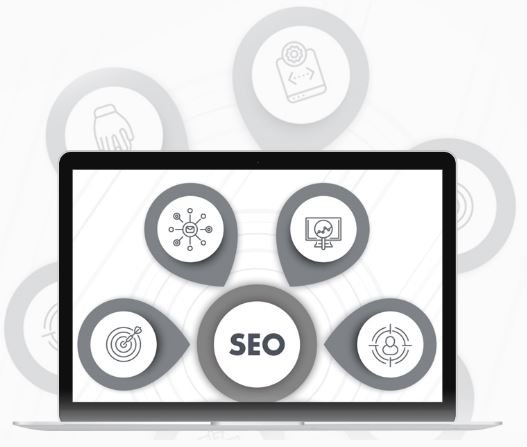Introduction to On-Page SEO
As a website owner, you’re probably well aware of the importance of search engine optimization (SEO) in driving organic traffic to your site. While there are various aspects of SEO, one that plays a crucial role in boosting your website’s visibility is on-page SEO. In this article, we will explore seven essential on-page SEO techniques that can help elevate your website traffic and improve your search engine rankings.
On-Page SEO (also known as “on-site SEO”) is the practice of optimizing web page content for search engines to identify what your site is about and then serve the content to users based on how the search engine ranks your site’s content (it’s quality and usefulness). It helps in getting the right organic traffic, which leads to potential customers and eventually conversions, which is the ultimate goal!
Importance of On-Page SEO for Website Traffic
Before diving into the specific techniques, let’s first understand why on-page SEO is so important for driving website traffic. On-page SEO involves optimizing your web pages to make them more search-engine friendly. By implementing on-page SEO techniques, you ensure that search engines understand and rank your content appropriately. This, in turn, helps your website appear higher in search engine results pages (SERPs) and attracts more organic traffic.
When your website ranks higher in SERPs, it becomes more visible to potential visitors. Studies have shown that the top three search results receive the majority of clicks, with the first result getting the lion’s share. Therefore, by optimizing your web pages using on-page SEO techniques, you can significantly increase your chances of attracting high-quality traffic to your website.

On-Page SEO Checklist
To effectively implement on-page SEO, it’s essential to have a checklist that covers all the necessary elements. Here’s a comprehensive on-page SEO checklist that you can follow to optimize your web pages.
Let’s dive in!
1. Optimizing Meta Tags
Meta tags are HTML elements that provide information about a web page to search engines. By optimizing meta tags such as title tags and meta descriptions, you can improve your website’s visibility in search results.
2. Utilizing Keyword Research
Conducting thorough keyword research allows you to identify the most relevant and high-performing keywords for your web pages. By incorporating these keywords naturally into your content, headers, and meta tags, you can enhance your on-page optimization.
3. Creating High-Quality, Optimized Content
Content is the heart of any website, and it plays a crucial role in on-page SEO. By creating high-quality, informative, and optimized content, you can attract and engage your target audience while satisfying search engine algorithms. Any SEO digital marketing agency will help you with selecting keywords based on searchability and difficulty factors.
4. Optimizing URL Structure and Internal Linking
URL structure and internal linking are two often overlooked but critical aspects of on-page SEO. By optimizing your URL structure to be descriptive and user-friendly and implementing relevant internal links, you can improve your website’s navigation, user experience, and search engine rankings.
5. Enhancing User Experience
User experience (UX) is a vital factor in on-page SEO. Search engines prioritize websites that provide a positive and seamless user experience. By optimizing your website’s design, navigation, and overall usability, you can improve your on-page SEO and keep visitors engaged.
6. Improving Page Load Speed and Mobile Optimization
In today’s digital landscape, website speed and mobile optimization are paramount. Search engines consider page load speed and mobile-friendliness as ranking factors. By optimizing your website for fast loading times and ensuring it is mobile-responsive, you can enhance your on-page SEO and deliver a better user experience.

4. Optimize Image and Multimedia Aspects
When trying to keep your customer engaged within the site, presentation matters the most. Therefore, Images play an integral part in making your page more attractive as well as understandable. However, to minimize the difficulties of the search engine’s analysis of images, it is better to optimize them according to the keywords properly. This notable addition will also allow more efficiency to your site.
Conclusion:
Implementing the right on-page SEO techniques is crucial for driving organic traffic to your website. By optimizing meta tags, utilizing keyword research, creating high-quality content, optimizing URL structure and internal linking, enhancing user experience, and improving page load speed and mobile optimization, you can elevate your website traffic and improve your search engine rankings.
Remember, SEO is an ongoing process, and staying up to date with the latest trends and algorithm changes is essential. If you’re looking for expert help with your SEO efforts, our team of skilled SEO experts can help. With a proven track record of boosting website rankings, we can help you stand out from the competition. Contact us today to learn more about how we can take your website to new heights.
Are you looking for help with your SEO? Our team of skilled SEO experts has a proven track record of boosting website rankings in as little as 90 days. Contact us today to learn more about how we can help you stand out from the competition.
Related Posts
B2B Email Marketing: Effective Strategies and Tips
What to include on the home page of your website

Clutch Recognizes Dynamic Design Solutions, LLC as a Top Marketing Strategy Company in Oregon
